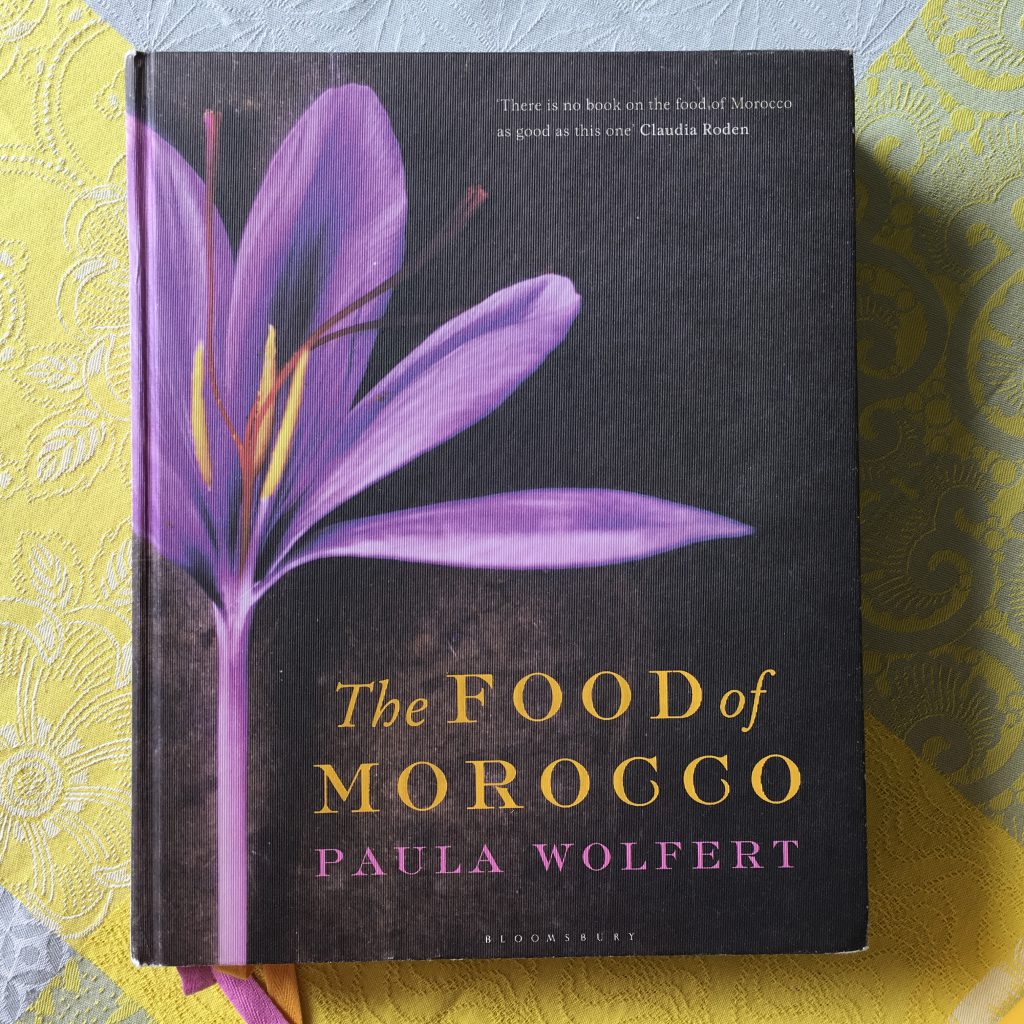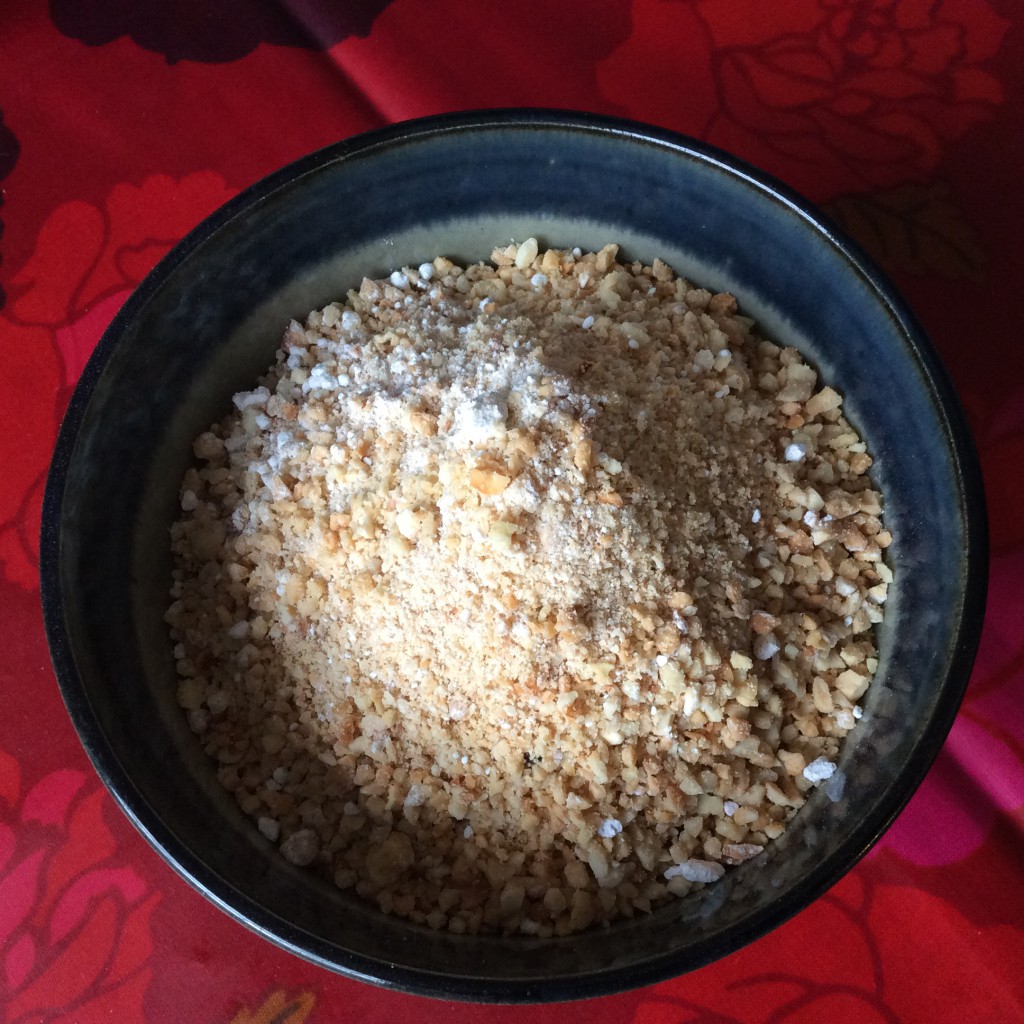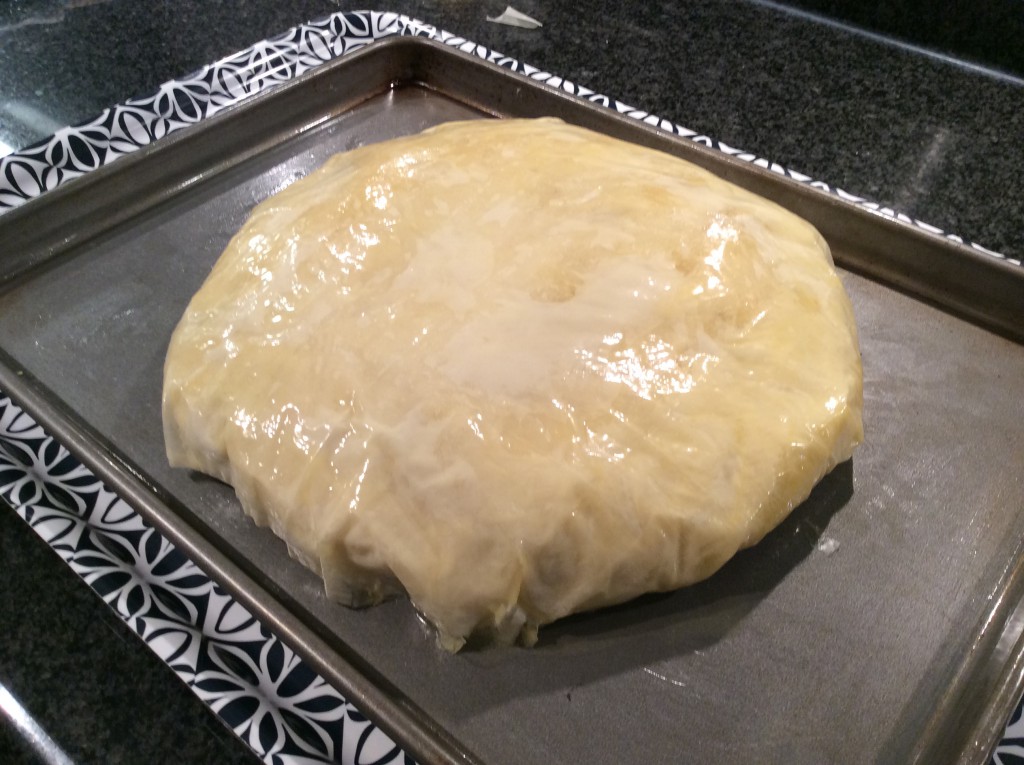Diary: 24 December 2015
‘Tis the season to be jolly.
We start with a Moroccan-inspired dinner on Christmas Eve.
(Update 23 December 2019: for a vegetarian bastila please see here).
When it comes to Morrocan food, there is only one book I possess: The Food of Morocco by Paula Wolfert (ISBN 9781408827468).


Two years ago our family went on a week’s trip to Morocco where, in the Atlas Mountains, Mr Gochugaru fell and broke a rib at the end of a hike. Returning to Marrakesh, he was in a lot of pain but despite that, he braved a few outings before realising that it was impossible to continue as normal. For one, he could not bend down to tie his shoelaces and when these came undone, I assumed a lowly position and did these up for him. I think there were many local men around the souks who (not knowing the real situation) felt it was quite a good bargain to have an Oriental wife…
Our stay in Marrakesh was wonderful because we had the riad to ourselves and each day the resident cook would present us with her special dishes. We agreed in the end that it was better to eat ‘at home’ than to go out to restaurants. Returning to London, I was quite keen to find recipes for some of the dishes we had eaten and Ms Wolfert’s book took us right back to North Africa.
Recently Mr Gochugaru suggested that he wouldn’t mind returning to Marrakesh. Until then, we are content to cook from this book, as we did for our Christmas Eve dinner with friends. Of the many dishes we have tried, one of the most delicious but challenging is Bastila of Fes with Chicken or Quail. The recipe is described in words and pictures over five pages. It is a dish to make in stages, and I have given step-by-step instructions below. The ingredients and method have been slightly adapted to what I can manage in a London kitchen.
You will need:
1 kg skinnless and boneless chicken thighs
A large pinch of saffron soaked in 3 tablespoons boiling water
1 teaspoon ground ginger
¾ teaspoon ground black pepper
¼ teaspoon ground turmeric
¼ teaspoon grated nutmeg
1 teaspoon coarse sea salt
1 large cinnamon stick
1 small red onion, grated
30 g parsley leaves, chopped
30 g coriander leaves, chopped
30 g unsalted butter
360 ml water
2 tablespoon sunflower oil
300 g whole blanched almonds
30 g icing sugar
1½ teaspoons ground cinnamon
Juice of 1 lemon
9 medium eggs
225 g filo pastry sheets
100 g melted butter, to brush the pastry
Step 1
Place the chicken thighs in a wide pan (mine is 30 cm in diameter). Mix the saffron water with the ginger, pepper, turmeric, nutmeg and salt. Add this to the chicken and toss everything around, then leave aside for 10 minutes.
Step 2
Add the cinnamon stick, onion, parsley, coriander, butter and water to the pan. Bring to the boil, then lower the heat. place a cover on the pan and simmer for 40 minutes.
Step 3
Meanwhile, heat the oil in another pan and lightly brown the almonds. Drain on kitchen paper. When the almonds are cool, set aside 12- 15 aside for garnishing, and coarsely grind the remainder in a food processor. Combine the chopped almonds with the icing sugar and cinnamon.
Step 4
Remove the chicken from the pan and place in a large bowl. Discard the cinnamon stick. Bring the cooking liquid to the boil until it has reduced to about 320 ml. Add the lemon juice. Beat the eggs until frothy, then slowly pour into the simmering sauce, stirring continuously in one direction until the eggs cook and set. Switch the heat off as soon as the eggs have become ‘curdy’.
Step 5
Scrape the egg mixture into a sieve set over a bowl and leave to drain. The chicken should be cool enough to handle by now, so roughly shred it with your hands. You can prepare the chicken and egg mixtures up this point ahead of time. Wrap each separately and keep in the fridge overnight. Store the ground almonds in a tupperware.
Step 6
Remove the chicken and egg mixtures from the fridge an hour before you need to cook the bastila. Preheat the oven to 220°C/ 425°F/ Gas 7. Melt the butter and get ready a pastry brush. What you now need to imagine is the finished product, which is a pie that is 30 cm round and which contains three layers of ingredients i.e. the chicken, egg and almonds.
Unroll the filo pastry sheets and keep them under a damp tea towel to prevent from drying out. Brush some butter all over a large baking tray. Cover the bottom of the tray with four pastry sheets which each overlap in the centre on one of its short sides. Butter the sheets.
Continue with four more sheets, this time at a 45° angle to the first four sheets. You will end up with a sort on Union Jack flag of pastry sheets. Butter the sheets. Finally place one whole pastry sheet in the centre of the tray and butter before placing the filling on (step 7).
Step 7
Place the chicken in the centre of the pastry in an even layer and in a circular shape. Cover with the egg mixture followed by the ground almonds. Leave aside 3 tablespoons of the almond mixture to decorate the finished pie.
Step 8
Fold the overlapping pastry sheets back towards the centre, in order to cover the pie. Start with the sheet you placed last on the tray, and finish with the first sheet you placed on the tray. Butter the top of the pastry sheets as you fold them inwards.
You should end up with a round pie. Place the remaining pastry sheets one at a time over this parcel, tucking in the ends under the pie and brushing each layer with more butter. The aim is to end up with a neat round parcel.
Step 9
Bake the pie for 30 – 40 minutes. Remove from the oven when it looks golden brown. Serve the pie on a large dish and sprinkle with the remaining ground and whole almonds before serving. This decoration is not as intricate as the original which requires dusting the pie with a little icing sugar, then running criss-cross lines of cinnamon over the top. However, the taste is just as good and your guests will still be happy with your efforts!
As with so many things we place on the dining table, the pie was eaten before I could take a photo of it cut up. The rest of the dinner consisted of a few dips and salads with flat bread, along with some fish and a lamb and prune tagine served with couscous. The Food of Morocco is over 500 pages long and there are enough recipes to keep you occupied for another year. However it is Christmas Day tomorrow and we have to return to Britain for the traditional turkey…which indeed we have waited a year for.













